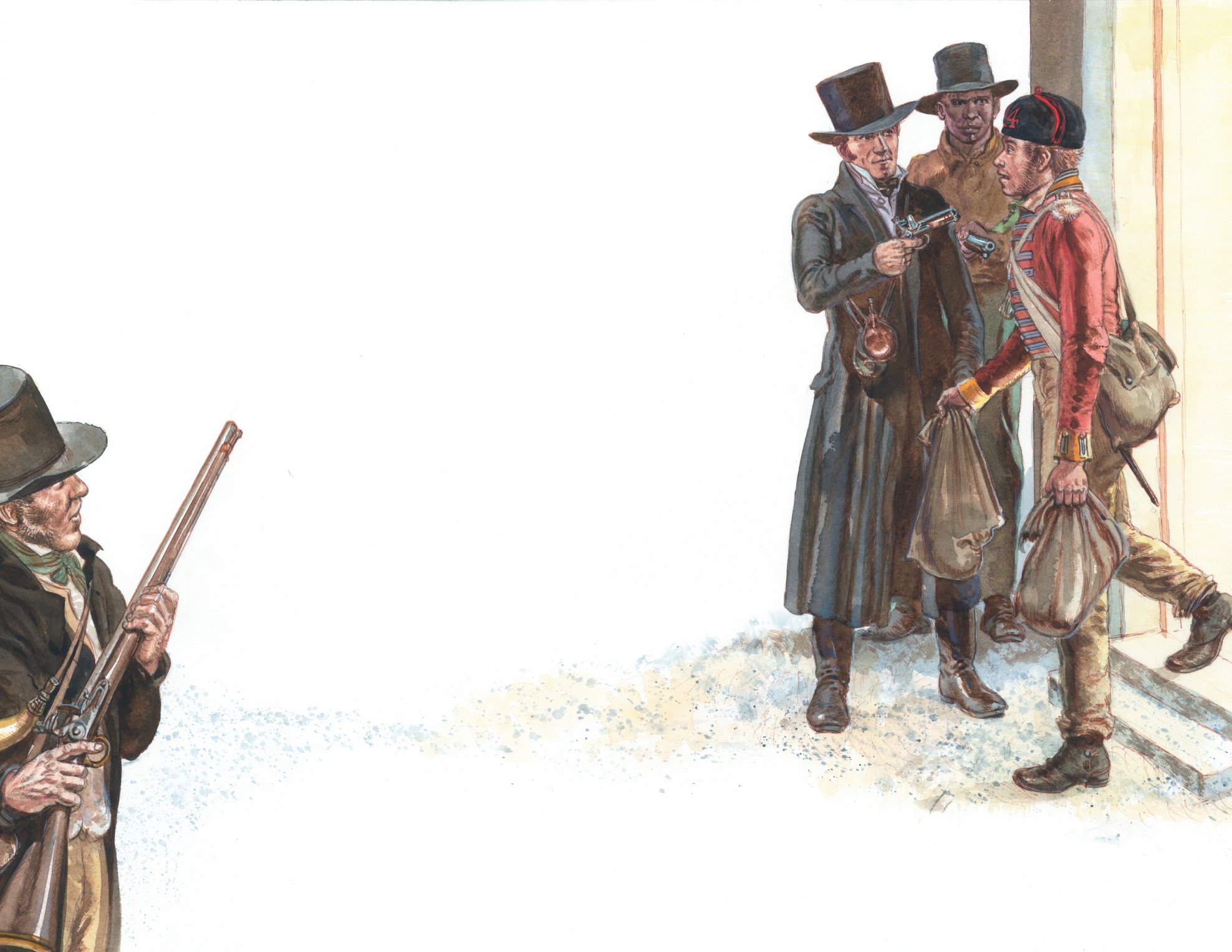Dr. William Beanes was a third generation Scotsman and surgeon born in Croom, Prince George’s County. He was an early patriot who offered his medical services after Lexington and Concord, and the battles of Brandywine, Long Island, and Valley Forge. After the Revolution, he was a founding member of the Maryland State Medical Society.
In August of 1814, during the War of 1812, the British marched into Upper Marlboro on their way to Washington, DC and found the city practically deserted, except for Dr. Beanes. The 65-year-old doctor thought that the best way to save his own property was to offer it to British Major General Ross as his headquarters for the night. The doctor promised not to interfere with their military operation and the British mistook him as a sympathizer.
After the British victory in Washington, DC and their burning of the White House, Capitol, and Library of Congress, Ross’s troops were returning to their ships in southern Maryland through Upper Marlboro. The main force moved on, but stragglers and deserters terrorized residents, stealing livestock, and destroying property. At the request of Maryland’s governor Bowie, Doctors William Beanes, William Hill, and Philip Weems captured the British miscreants and sent them off to be confined in Queen Anne City.
When the British missed these prisoners, they arrested the three doctors. “They crashed into Beanes house and pulled him out of bed barely giving him time to dress. Beanes was forced to ride a bare-backed mule the 35 miles back to the fleet anchored in Chesapeake Bay”.1 Dr. Beanes was kept prisoner onboard HMS Brig Thetis with runaway slaves from Prince Georges County.
Major General Ross threatened to burn the city of Upper Marlboro and hang Dr. Beans if his soldiers were not released. The British prisoners were released and Doctors Weems and Hill were released by the end of August. But the British refused to release Doctor Beanes because thought he betrayed their trust and might be a spy. They chose to transport this special prisoner to their next target: Baltimore. Dr. Beanes was placed onboard British Vice-Admiral Alexander Cochrane’s ship-of-the-line 50-gun flagship HMS Tonnant.
Fearing for his life, Beanes’ friends implored Georgetown attorney, Francis Scott Key, to negotiate his release. Key first collected letters for home from injured British soldiers, boarded the local mail packet The President and accompanied President Madison’s emissary for Prisoner Exchange, Colonel John Stuart Skinner. The mail packet traveled under a flag of truce to the HMS Tonnant off the coast of Fort McHenry in Chesapeake Bay where Beanes was held. On September 7, 1814, negotiations began when Key and Skinner dined as the guests of Vice Admiral Alexander Cochrane, Rear Admiral George Cockburn, and Major General Robert Ross aboard the HMS Tonnant. After 7 days of negotiations, the turning point came when Key presented Ross with the letters from British prisoners-of-war who received kind treatment from the American doctors, including Dr. Beanes, after the Battle of Bladensburg on August 24th.
Beanes was released, but Skinner, Key, and Beanes were not allowed to return to their own boat because they were familiar with the strength and position of the British units and their plan to attack Baltimore. The mail packet The President was tied to the British frigate HMS Surprise and the three were held captive for more than a week until after the Battle of Baltimore. Key, Skinner and Beanes were permitted onboard The President where they watched the bombing of the American forces at Fort McHenry on the night of September 13–14, 1814 from the British ship.
During the rainy night, Key witnessed the bombardment and was able to see that the fort’s smaller “storm flag” continued to fly, but once the shelling and rockets stopped, he would not know the outcome until the light of dawn. On the morning of September 14, the storm flag had been lowered and the larger American flag raised.
Key wrote a poem on the back of a letter he had kept in his pocket. The three Americans were released in Baltimore on the evening of September 16, 1814. Key completed the poem at the Indian Queen Hotel, where he was staying, and titled it “Defence of Fort M’Henry”.
In 1899, the U.S. Navy officially adopted “The Star-Spangled Banner”. In 1916, President Woodrow Wilson ordered that “The Star-Spangled Banner” be played at military and other appropriate occasions.
In 1931, President Herbert Hoover signed a bill officially adopting “The Star-Spangled Banner” as the national anthem of the United States of America.
Dr. Beanes spent the remainder of his life living in his home in Upper Marlboro, where he passed away on October 12, 1828, at the age of 79. Historical Marker #69428, dedicated to Dr. William Beanes is located on the southwest pillar of Dr. Beanes Tomb on the hill above the intersection of Oden Bowie Drive and Elm Street in Upper Marlboro.
_____________
1Allen D. Spiegel, Ph.D. “The Role of A Physician in the Composition of ‘The Star-Spangled Banner “‘ Journal of Community Health 20, no. 4 (1995): 370.

